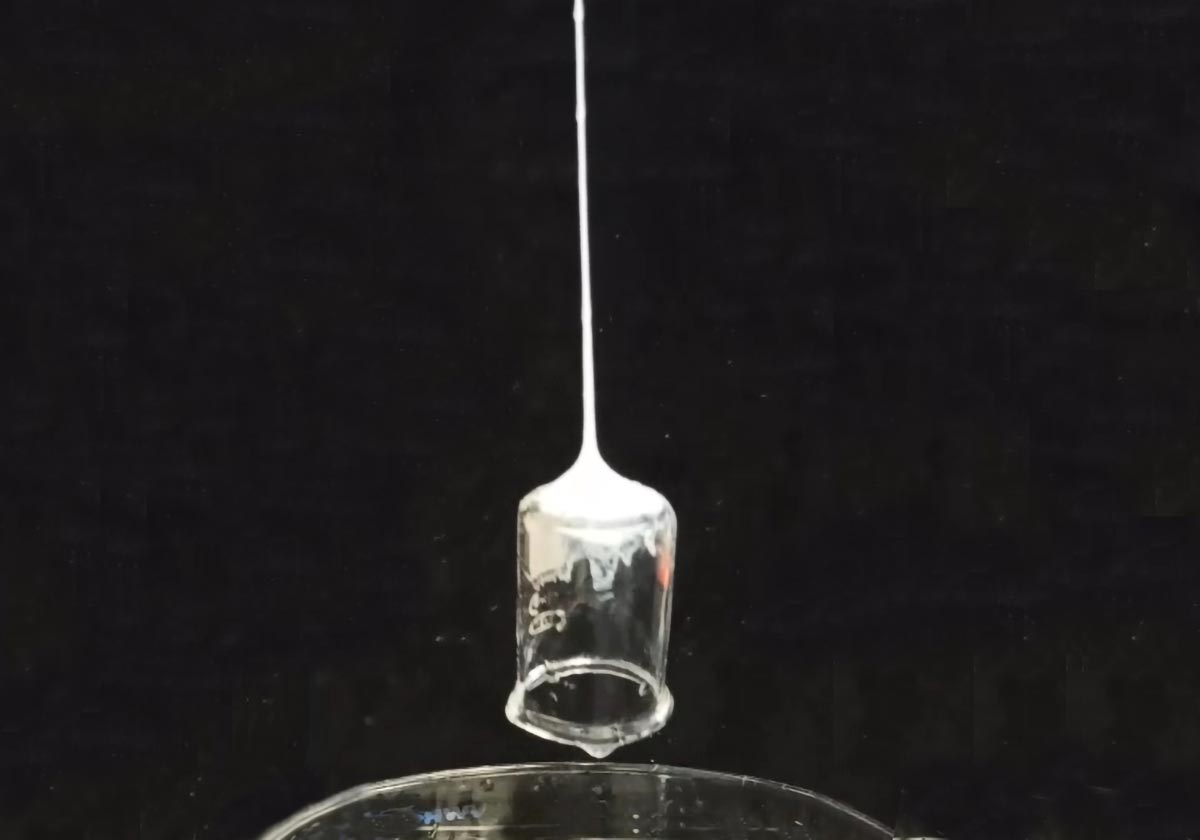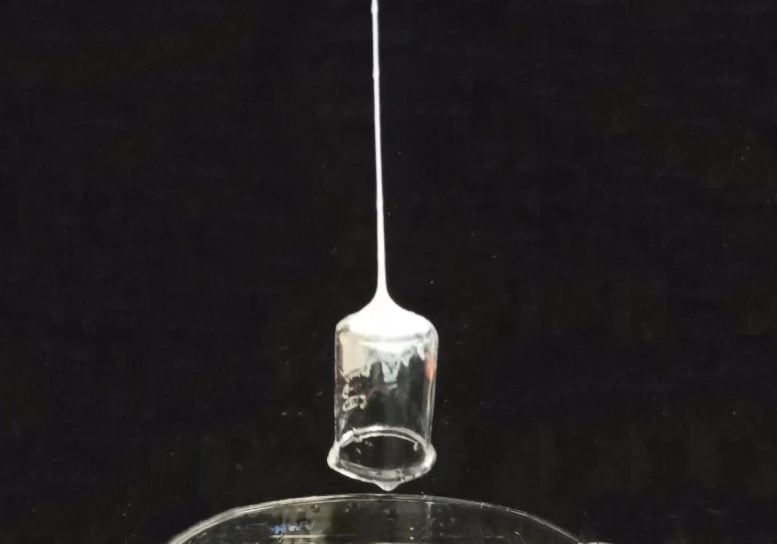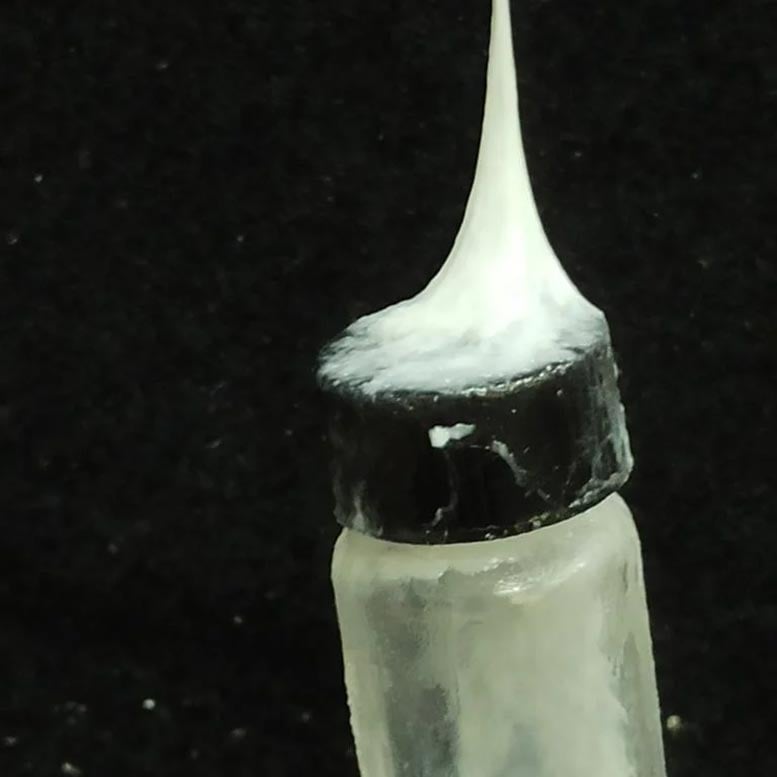

Inspired by the fantastical abilities of comic book superheroes, researchers at Tufts University have developed a real-life web-slinging technology using silk fibroin.
This innovative material can shoot from a device, solidify mid-air, and adhere strongly to objects, demonstrating the potential for lifting items significantly heavier than itself and paving the way for diverse technological applications.
Web-Slinging Tech Emerges From Tufts University
Every child who has ever dived into a comic book or watched a Spider-Man film has wondered what it’s like to shoot a web from their wrist, soar above city streets, and capture villains. Researchers at Tufts University have turned those fantasies into reality, developing the first web-slinging technology. This innovative device shoots a fluid material from a needle that instantly solidifies into a string capable of adhering to and lifting objects.
At the Tufts University Silklab, these sticky fibers are spun from silk moth cocoons. These cocoons are boiled in a solution to break them down into their building block proteins, known as fibroin. The silk fibroin solution is then extruded through narrow-bore needles, forming a stream that solidifies into a fiber upon contact with air, with the help of specific additives.
Liquid stream of silk solidifies to a fiber, adheres to and lifts glass laboratory beaker. Credit: Marco Lo Presti, Tufts University
Nature’s Blueprint Inspires Innovation
Of course, nature is the original inspiration for deploying fibers of silk into tethers, webs, and cocoons. Spiders, ants, wasps, bees, butterflies, moths, beetles, and even flies can produce silk at some point in their lifecycle. Nature also inspired the Silklab to pioneer the use of silk fibroin to make powerful glues that can work underwater, printable sensors that can be applied to virtually any surface, edible coatings that can extend the shelf life of produce, a light collecting material that could significantly enhance the efficiency of solar cells, and more sustainable microchip manufacturing methods.

Engineering Breakthroughs and Accidental Discoveries
However, while they made significant progress with silk-based materials, the researchers had yet to replicate the mastery of spiders, which can control the stiffness, elasticity, and adhesive properties of the threads they spin.
A breakthrough came about purely by accident. “I was working on a project making extremely strong adhesives using silk fibroin, and while I was cleaning my glassware with acetone, I noticed a web-like material forming on the bottom of the glass,” said Marco Lo Presti, research assistant professor at Tufts.
The accidental discovery overcame several engineering challenges to replicating spider threads. Silk fibroin solutions can slowly form a semi-solid hydrogel over a period of hours when exposed to organic solvents like ethanol or acetone, but the presence of dopamine, which is used in making the adhesives, allowed the solidification process to occur almost immediately. When the organic solvent wash was mixed in quickly, the silk solution rapidly created fibers with high tensile strength and stickiness. Dopamine and its polymers employ the same chemistry used by barnacles to form fibers that stick tenaciously to surfaces.
Liquid stream of silk solution solidifies to a fiber, adheres to and lifts several steel bolts from a petri dish filled with sand. Credit: Marco Lo Presti, Tufts University
Advanced Silk Fibroin Fibers
The next step was to spin the fibers in air. The researchers added dopamine to the silk fibroin solution, which appeared to accelerate the transition from liquid to solid by pulling water away from the silk. When shot through a coaxial needle, a thin stream of the silk solution is surrounded by a layer of acetone which triggers the solidification. The acetone evaporates in mid-air, leaving a fiber attached to any object it contacts. The researchers enhanced the silk fibroin-dopamine solution with chitosan, a derivative of insect exoskeletons that gave the fibers up to 200 times greater tensile strength, and borate buffer, which increased their adhesiveness about 18-fold.
When injected into acetone, a solution of silk fibroin with dopamine and other additives spontaneously forms a web-like material. Credit: Marco Lo Presti, Tufts University
Real-World Applications Demonstrated
The diameter of the fibers could be varied between that of a human hair to about half a millimeter, depending on the bore of the needle.
The device can shoot fibers that can pick up objects over 80 times their own weight under various conditions. The researchers demonstrated this by picking up a cocoon, a steel bolt, a laboratory tube floating on water, a scalpel partially buried in sand, and a wood block from a distance of about 12 centimeters.
Superhero Inspiration Drives Future Innovations
Lo Presti noted that “if you look at nature, you will find that spiders cannot shoot their web. They usually spin the silk out of their gland, physically contact a surface, and draw out the lines to construct their webs. We are demonstrating a way to shoot a fiber from a device, then adhere to and pick up an object from a distance. Rather than presenting this work as a bio-inspired material, it’s really a superhero-inspired material.”
Natural spider silk is still about 1000 times stronger than the man-made fibers in this study. But with a little added imagination and engineering, the innovation will continue to improve and pave the way for a variety of technological applications.
The Intersection of Imagination and Science
“As scientists and engineers, we navigate the boundary between imagination and practice. That’s where all the magic happens,” said Fiorenzo Omenetto, Frank C. Doble Professor of Engineering at Tufts University and director of the Silklab. “We can be inspired by nature. We can be inspired by comics and science fiction. In this case, we wanted to reverse engineer our silk material to behave the way nature originally designed it, and comic book writers imagined it.”
Reference: “Dynamic Adhesive Fibers for Remote Capturing of Objects” by Marco Lo Presti, Marina Portoghese, Gianluca M. Farinola and Fiorenzo G. Omenetto, 24 September 2024, Advanced Functional Materials.
DOI: 10.1002/adfm.202414219
The innovation is published in the journal Advanced Functional Materials.